Shiren the Wanderer has always been a tremendously influential series. Franchises from Final Fantasy to Pokémon have all made their own attempts at the mystery dungeon archetype of roguelikes. Shiren the Wanderer wasn't quite the originator of the franchise, but it was the entry that polished it into something special. Since its release, there have been countless ports, sequels and new entries. The original Shiren was one of my favorites, as it felt like it adhered best to the simplicity that made the Mystery Dungeon gameplay addictive and fun. I was quite pleased with Shiren the Wanderer: The Mystery Dungeon of Serpentcoil Island because it balanced the new and old to create something that was a genuine delight.
Shiren the Wanderer games all follow the same basic plot. You play as Shiren, the titular wanderer, and his ferret sidekick Koppa, as they wander into a mysterious new land full of randomly transforming dungeons and treasures and end up getting into epic adventures while seeking treasure and doing good deeds. Serpentcoil Island doesn't break the mold, as Shiren comes to the titular island seeking a legendary pirate's treasure, supposedly guarded by a terrible beast who lives on the top floor of the local dungeon. Of course, there's more than a terrible beast, and it is up to Shiren to figure out the real dangers of the island and escape with enough treasure to keep him in riceballs for the rest of his life.
If you've never played a Mystery Dungeon game before, they're one of the earliest roguelike experiences. They are grid-based, turn-based, dungeon-crawling RPGs where you explore a dungeon one step at a time. Every time you act, the enemy acts, and you're charged with balancing your various items, gear and abilities to survive what can be extremely lethal situations. Shiren can and will brutally kill you if you're not careful.
A big part of this is due to the strong enemy design. Every enemy type in the game has a specific gimmick, even the earliest types. Minotaurs can do a critical hit for more damage, walruses can steal items, octopi will follow other monsters and get stronger if an ally dies, robots can make dangerous traps, ghosts can possess and empower other monsters, and more. You can't mindlessly smash enemies because even the most adorable and low-level monster can absolutely wreck your day if you're not careful.
What makes this fun is that it goes both ways. As you explore the dungeon, you'll find items and equipment that can massively turn the tide of battle. When swung, staves can freeze enemies in place, teleport them, electrify them, and more. Scrolls can cure curses, make safe zones, heal weaknesses and more. Weapons and armor can be upgraded, fused and modified to become absurdly strong and have countless effects, such as hitting more spaces and nullifying explosions. There are resonant pieces of equipment that get stronger if you wear them together.
Shiren the Wanderer shines in the moment-to-moment choices you make, and Serpentcoil Island adds even more of that. Everything you can do has a cost. Is it worth attacking an enemy regularly and taking damage in return? Should you spend a precious staff charge to stun them, allowing you to get a bonus hit? Is it worth hopping into a Monster House and spending a bunch of resources to get a bunch of resources in return? This is all standard Shiren fare, but Serpentcoil Island offers cool new choices.
For example, there's the Sumo status. When you eat food while you're already full or eat certain stomach-expanding items, you'll increase your maximum hunger. If you reach 150 hunger, then you'll enter a Sumo status, where you get a massive boost to HP and attack — in addition to immunity to traps. In exchange, you get hungry faster, and if you go below 120 hunger, you revert to normal and lose five max hunger. This adds a cost-reward balance to eating food. Is it worth gorging early on, so you can be ready to go into Sumo status for the later game? Is it better to conserve, so you don't end up starving to death because you ran out of food?
There are also the side routes through the dungeon, which are optional paths that you can unlock. They usually contain harder enemies or more challenging gimmicks, but in exchange, they have some sort of reward. For example, the Ghost Ship is full of traps and ghosts, but at the bottom of every Ghost Ship dungeon, there's a rare piece of sacred equipment. If you survive, you'll come out of it far stronger.
This makes the game more fun from moment to moment because nothing feels like it's a waste. Rather than reinventing the wheel, the game tosses a bunch of new options and gimmicks at you. Some enemies get stronger or weaker when wet, you can transform into different monster forms for different challenges, there are special dungeons with different gimmicks that require you to rethink tactics, and more. There's even a training room where you can spawn certain enemies, gimmicks, and items, and you can experiment to figure out the best way to handle difficult situations.
Serpentcoil Island can be considered to be a "back to basics" style of Shiren game, and that is almost entirely in its favor. While I loved the last game, it felt very different from what I considered the ideal Mystery Dungeon experience, since the ease of keeping your gear and the scaling of the dungeons felt more like a standard RPG than a Mystery Dungeon offering. Serpentcoil Island goes back to the same feeling as the older games, with a greater emphasis on individual runs instead of constantly scaling power, and it is a lot more fun to play. While you can gradually build up powerful equipment and armor, it takes a lot more planning and care, and it's easier to accidentally lose everything.
Thankfully, losing everything in Serpentcoil Island isn't necessarily the end. The game brings back the rescue system from previous games, but it's been slightly readjusted. If the dungeon allows it, you can request a rescue from other players when you die. This sets up a help request on an internet board and challenges players to retrieve your corpse through the same dungeon, at which point you restart where you died. A nice twist in Serpentcoil Island is that rescuing allies rewards you with Aid Points, which you can trade for massive buffs on your next rescue. You can also rescue yourself, so you're not at the mercy of random help. If you take the time to rescue others, it means that if you decide to rescue yourself, you can do so with powerful armor, immunity to hunger, and more under your belt. It's a nice risk/reward system because it can often be more worthwhile to help others rather than focusing on yourself.
Even if you die, the game has a meta progression system. There are multiple plotlines that advance the further you get into the dungeons, but they only advance once or so per life. That means each time you die, the plots will progress, and in turn, they eventually unlock powerful items, new mechanics like weapon fusion, and companions who join you in dungeons to help even the odds. This is pretty similar to the older Shiren games, so it isn't a huge twist, but it is a lot of fun.
Shiren the Wanderer: The Mystery Dungeon of Serpentcoil Island is an extremely polished and deeply enjoyable entry in the franchise. It doesn't break the mold or introduce wild new gimmicks, but it focuses on giving you more challenges, more options, and making the basic experience shine. This is a fantastic entry point for newcomers and a welcome return to form for longtime fans. It is the embodiment of what Shiren the Wanderer should be: easy to pick up, difficult to master, and addictive enough that you keep coming back.
Score: 9.0/10
More articles about Shiren The Wanderer: The Mystery Dungeon Of Serpentcoil Island


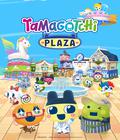
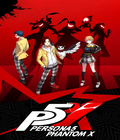
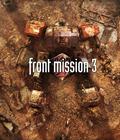

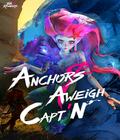
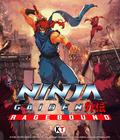

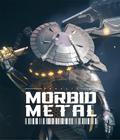

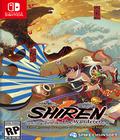 Shiren the Wanderer and his companion, Koppa the talking ferret, return for a new roguelike dungeon-crawling adventure on Serpentcoil Island.
Shiren the Wanderer and his companion, Koppa the talking ferret, return for a new roguelike dungeon-crawling adventure on Serpentcoil Island.

































